- Guitar Songwriting: A compassionate Guide (Part 1)
- Writing your first guitar song
- MODIFYING AN EXISTING SONG
- FINDING INSPIRATION
- SONG STRUCTURE
- LYRICS
- And remember, the Sheet Music Library is here to help you with thousands of guitar, piano and voice scores!
Guitar Songwriting: A compassionate Guide (Part 1)
Writing your first guitar song
Writing a song is a gift to yourself—and sometimes a gift to the world. Song is one of the most powerful communication tools we have as human beings: a slice of life encapsulated in words, melody, and accompaniment. Many of us would like to write songs but find it
hard to get started. We find it very intimidating to commit ourselves to words, notes, and chords and then to paper, recordings, and listeners’ ears. Or, once we have started, we find it pretty much impossible to develop ideas into satisfactory songs. Here are some simple techniques that will help you get started and help you develop your ideas into songs that work.
MODIFYING AN EXISTING SONG
If getting the ball rolling is particularly intimidating, I encourage you to pick out a song that you admire and know the lyrics and melody to. It doesn’t matter if you can’t play the song. Remember that this is an exercise with the sole purpose of easing you slowly into your own creativity. The results will not be judged. Once you’ve chosen the song, choose a verse you like the feel of and rewrite it. One approach is to keep the same melody and write new words that fit the rhythm and the narrative purpose for that part of the song. You can also try leaving the words alone and rewriting the melody.
This might be a little harder because the melodies of our favorite songs tend to get deeply entrenched in our memory. One way to help make this technique work is to change the key of the song. A third approach is to create a new chord structure that fits with the original lyrics and melody. This can be a lot of fun for more experienced players who understand chord pro-gressions, inversions, and modes, but it might be intimidating to the less experienced musician. If you ever do feel intimidated during these exercises, try taking a small step–just changing one line or even one or two words, for example—rather than a huge stride.
FINDING INSPIRATION
OK, so you’re ready to go solo. What are you going to write about? The single most com-mon inspiration for songs is love: the lack of it, the hope for it, the experience of it, the loss of it. You might not want to bare your soul so intimately in your first song, though, so let’s look at some other options.
- Experiences. Has anything notable happened to you lately? Some happenstance that changed your way of seeing life, yourself, someone else, the world? Did you witness some-thing unusual? Remember a childhood memory, perhaps? There’s lots of potential here.
Political causes. Do you feel strongly about a particular cause? Write a song about it. This is a deep well of inspiration for the folk movement.
- History. Another great source for folkies. Lots of rich material.
- People. Think about someone you admire, someone who inspires you.
- Objects. This may sound like an odd suggestion, but objects have inspired many great songs. Artists write songs about bridges, buildings, ships … day-old banana pudding.
- Fantasies and made-up occurrences. They can be impossible, fanciful, or just plain untrue. One of my favorite songs, “Something About Him” by Brady Earnhart, was written about a school days experience the writer invented.
- Dreams. I was going to put this under fantasies, but there are invented situations that can and do come true.
Whatever subject you choose, you need to look carefully at how you think and feel about it. This is what actors mean when they ask, “What’s my motivation?” Does the sub-ject make you feel anger, pain, joy, tenderness? Where do your thoughts take you con-cerning this subject? At this point it would be a good idea to take notes on your thoughts and feelings. They’ll help you build a framework for the song and give shape to the way your words and melody develop.
SONG STRUCTURE
Writing a song is almost always an exercise that involves alternating structured thought with unstructured: intermittently letting go of intellectual control and expectations and allowing your creativity to flow. Structured thought allows order to be maintained, and unstructured brings in the unexpected or unconscious.
At this point, you need to decide what kind of song structure you’re going to use. Do you want to use a structure you’re familiar with from another artist’s work? Or do you want to let your poetic and melodic muse run free and just see what structure comes out? If there’s any doubt concerning structure, I’d recommend starting with a simple 12-bar blues. This structure has been hardwired into the musical awareness of the Western world for the last half century. It’s also sparse, so it encourages minimal use of words and limited melodic movement. Repetition is fundamental to the form.
In a 12-bar blues, the first line (sung over the first four bars) usually introduces the core subject matter and then comments on it, often in a way that brings tension to the subject. Most of the third bar and all of the fourth bar are generally instrumental. The next four bars might repeat the subject and expand on the comments and tension, and the last word usually rhymes with the last word of the first line. The seventh and eighth bars are usually instrumental. The last line should bring some kind of resolution to the subject, much as the melody and chordal turnaround brings resolution to the music. The 12th bar is most often the turnaround—a chordal/melodic progression, usually without words, that brings the song back to the top, to the next verse, which is structured like the first.
LYRICS
For most songwriters, the words of a song come first. Others start with the melody or with a chord progression and add the other elements one at a time. And for some, lyrics and melody come at the same time. Let’s start with the lyrics.
Go back to your notes on the general subject matter of the song you want to write. Do any of the words and phrases jump out at you? Do some of them seem to fit together either because of their meaning or because of their sound or rhythm?
For our 12-bar blues, I wrote down a few words about being a new songwriter, what it might mean and what it might feel like: trying to write a song I love songs want to do it music in my soul scary new going to do it determined. Looking at these words, I came up with the line:
I’m tryin’ to write a song and it’s kinda new to me
OK, that works. Note that I picked an easy rhyme (“me”) and remembered that this has to fit over three or so bars of a midpaced blues. For the second line, I wanted to repeat the core subject and comment further. I looked at the word scary and got:
I’m tryin’ to write a song and I’m scared as I can be
In order to stick to the standard 12-bar blues arrangement (which is now playing in my head), we need to add a brief pause to the lyrics after the word it’s in the first line and I’m in the second. This leaves us with:
I’m tryin’ to write a song and it’s… kinda new to me I’m tryin’ to write a song and I’m … scared as I can be
Hmm. That’s fine. Now I need a resolution. Going back to my original notes, I find the obvious resolution of “going to do it.” An alliteration—several words in a row starting with the same consonant—jumps out at me:
But I’m gonna get it goin’
I’ve got to admit that I’m a sucker for nice alliterations, and this one is particularly appealing because gonna get it goin’ comes with a built-in rhythm. Another look at my notes does nothing for me, so I write down the first thing that comes into my head:
But I’m gonna get it goin’… and I’m almost there you see
Now, I quite like the almost, but the there you see is pretty lame. Still, I never intended to leave things like that. I just wrote this line to help me come up with something more appropriate. Next I decide to be positive and note that I’ve come to this point fairly eas-ily—almost painlessly—and get excited about:
But I’m gonna get it goin’ almost painlessly
A few minutes’ detachment gets me to see that it’s an untidy rhyme and that painlessly somehow doesn’t fit with gonna get it goin’. So I fiddle with painlessly and find pain-free, which I like the feel of. When I attach it to the line, I get:
But I’m gonna get it goin’… and I’m almost there pain-free
So, now we have:
I’m tryin’to write a song and it’s… kinda new to me
I’m tryin’ to write a song and I’m… scared as I can be But I’m gonna get it goin”… and I’m almost there pain-free
A brief go at singing this verse shows me that tryin’ falls on the 1 of the first and fifth bars and that the pause in each line falls on the 1, with the next word starting on the off-beat. I’m fairly certain that the blues arrangement in my head will work best for this song, but I’ll try a few different feels and even recite the words aloud a few times (as straight as I can) to see if any other feel comes up. No, the blues feel seems to work best, but one thing that did jump out at me is that gonna get it goin’ begs to have the pace of the rhythm accelerated for those words.
Now I’ll sing the verse aloud unaccompanied until I’m happy with the way it flows. Only after this step do I pick up my guitar. It turns out I’m singing in the key of E minor, which leads me to a standard blues chord progression with Em, A7, and B7.
Alright! Our song is begun. I say our because I encourage you to write further verses based on the same structure. Perhaps when you’re done with this song, you’ll write your own from scratch. Remember to follow the steps we’ve discussed and not to bite off more than you can chew at any given moment. Good luck!
And remember, the Sheet Music Library is here to help you with thousands of guitar, piano and voice scores!

3 Hour Relaxing Guitar Music: Meditation Music, Instrumental Music, Calming Music, Soft Music
Browse in the Library:
| Artist or Composer / Score name | Cover | List of Contents |
|---|---|---|
| All Sondheim Vol IV Music and lyrics |
 |
All Sondheim Vol IV Music and lyrics |
| All That Jazz piano-vocal Arrangement |
 |
|
| All The Things You Are (Guitar And Tabs) | All The Things You Are (Guitar And Tabs) | |
| All The Things You Are (Guitar And Tabs) (Musescore File).mscz | ||
| All The Things You Are By Jerome Kern Guitar Transcription |
 |
|
| All The Things You Are Jerome Kern Oscar Hammerstein 2nd 1940 Jazz Standard (Vintage sheet music) |
 |
|
| All Time Standards (Songbook) Jazz Guitar Tablature Chord Melody Solos (Jeff Arnold) |
 |
All Time Standards (Songbook) Jazz Guitar Tablature Chord Melody Solos (Jeff Arnold) |
| All Time Standards Piano (Arr. Gabriel Bock) |
 |
All Time Standards Piano (Arr. Gabriel Bock) |
| All You Need Is Ears George Martin with Jeremy Hornsby 1979 (Book) The story o the recording genius who created The Beatles |
 |
|
| Allan Holdsworth Just for the curious book Guitar with Tablature |
 |
|
| Allan Holdsworth Melody Chords For Guitar |
 |
|
| Allan Holdsworth Super Guitarist with TABs |
 |
Allan Holdsworth Super Guitarist with TABs |
| Alle prese con una verde Milonga (Paolo Conte) | ||
| Allevi, Giovanni – Back To Life |
 |
|
| Allie Wrubel – Gone with the Wind |
 |
|
| Allman Brothers Guitar Songbook |
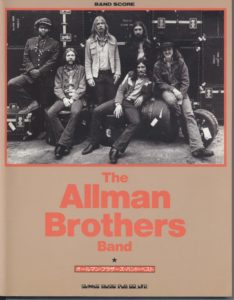 |
Allman Brothers Guitar Songbook |
| Allman Brothers, Best Of The (Piano, Vocal, Guitar) |
 |
Allman Brothers, Best Of The (Piano, Vocal, Guitar) |
| Allman Brothers, The – The Definitive Collection For Guitar Vol 1 with Tablature |
 |
Allman Brothers, The – The Definitive Collection For Guitar Vol 1 |
| Alma Redemptoris Mater |
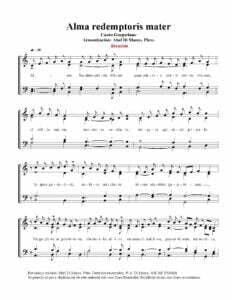 |
|
| Almeno tu nell’universo (Mia Martini) | ||
| Almir Chediak Ivan Lins Guitar Songbook Vol 2 |
 |
Ivan Lins Guitar Songbook Vol 1 by Almir Chediak |
| Alok – Hear Me Now Sheet Music |
 |
|
| Alone together (Howard Dietz & Arthur Schwartz) | Alone together (Howard Dietz Arthur SchwArtz) | |
| Alone Together (Musescore File).mscz | ||
| Alone Togheter Guitar Solo Transcription Jazz Standard |
 |
|
| Alphaville Forever Young (piano & Guitar) |
 |
Alphaville Forever Young (piano & Guitar) |
| Also Sprach Zarathustra Op. 30 – Richard Strauss (Musescore File).mscz | ||
| Alternative Rock Sheet Music Collection |
 |
Alternative Rock Sheet Music Collection |
| Always on my mind – Elvis Presley – easy arrangement for piano, with fingering |
 |
|
| Amadeus – W.A. Mozart (film score arr. for piano solo by D. Fox) |
 |
Amadeus – W.A.Mozart |
| Amadeus (original soundtrack piano solo arrangements) |
 |
Amadeus (Film score book) Piano Solos |
| Amalia Rodriguez FADOS Melodias De Sempre (GUITAR) |
 |
Amalia Rodriguez FADOS Melodias De Sempre (GUITAR) |
| Amando amando (Renato Zero) | ||
| Amar Pelos Dois (Salvador Sobral) | ||
| Amarcord (Nino Rota) | ||
| Amazing Grace – Tradicional (Piano ) |
 |
|
| Amazing Grace Traditional (Jazzy ver. sheet music) |
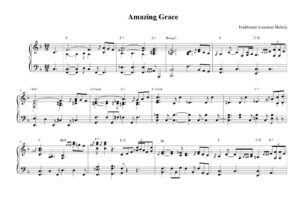 |
|
| Amazing Phrasing – Guitar 50 Ways to Improve Your Improvisational Skills (Guitar TABs Amazing Phrasing) (Tom Kolb) |
 |
Amazing Phrasing – Guitar 50 Ways to Improve Your Improvisational Skills (Guitar TABs Amazing Phrasing) (Tom Kolb) |
| Amelie Poulain – 6 pieces for piano – Yann Tiersen – Yann Tiersen |
 |
 |
| America (My Country ‘Tis of Thee Easy Piano Level 2 |
 |
|
| America Greatest Hits Piano Vocal Guitar chords |
 |
America Greatest Hits Piano Vocal Guitar chords |
| America Greatest Hits (piano & Guitar) |
 |
America greatest |
| America Horse With No Name Piano vocal | America Horse With No Name Piano vocal | |
| America’s Songs The Stories Behind The Songs Of Broadway, Hollywood, And Tin Pan Alley (Philip Furia, Michael Lasser) Book |
 |
|
| American Folk Songs For Guitar with Tablature |
 |
American Folk songs |
| American Folk Songs, My First Book of – Bergerac |
 |
|
| American Indian Melodies A. Farwell Op.11 (1901) |
 |
American Indian Melodies A. Farwell Op.11-min |
| American Pie (sheet music) |
 |
|
| American Popular Music (Book) by Larry Starr and Christopher Waterman |
 |
|
| Americana – Alegre, Magín (Guitarra) | Americana – Alegre, Magín (Guitarra) | |
| Amici Miei (Carlo Rustichelli) | ||
| Amor mio (Battisti) | ||
| Amore bello (Claudio Baglioni) | ||
| Amy Beach – Op.15 Four Sketches in Autumn |
 |
|
| Amy Grant – Breath Of Heaven | ||
| Amy MacDonald This Is The Life |
 |
AMY MACDONLAD |
| Amy Winehouse – Valerie |
 |
|
| Amy Winehouse – Valerie (sheet music) |
 |
|
| Amy Winehouse Amy Amy Amy |
 |
|
| Amy Winehouse Back To Black Songbook |
 |
Amy Winehouse Back To Black Songbook |
| Amy Winehouse Frank Songbook |
 |
Amy Winehouse Frank |
| Amy Winehouse I Heard Love Is Blind |
 |
|
| Amy Winehouse Just Friends |
 |
|
| Amy Winehouse Rehab |
 |
|
| Amy Winehouse You Know Im No Good |
 |
|
| An affair to remember (Harry Warren) | ||
| An American In Paris An George Gershwin (Concert Band)An American In Paris An George Gershwin (Concert Band) Arr. by Naohiro Iwai |
 |
|
| An American Tail – The Marketplace – James Horner | ||
| An Introduction To Bach Studies (eBook) |
 |
|
| An Irish Blessing (Musescore File).mscz | ||
| An Irish Blessing (SATB) Choral | An Irish Blessing (SATB) | |
| Analisis musical claves para entender e interpretar la Música (M. y A. Lorenzo) Español |
 |
|
| Analysis Of Tonal Music An Schenkerian Approach Allen Cadwallader and David Gagné (Book) |
 |
|
| Analyzing Bach Cantatas by Eric Chafe (eBook) |
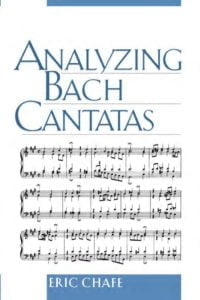 |
|
| Analyzing Schubert by Suzannah Clark (Cambridge Un. Press) (eBook) |
 |
|
| Anastacia Not That Kind Songbook |
 |
Anastacia songbook |
| Anastasia Once Upon A December arr. by John Brimhall (Piano Solo 2 Versions Easy And Intermediate) |
 |
|
| Anastasia Sheet Music songbook Piano & vocal |
 |
Anastasia Sheet Music songbook Piano & vocal |
| Ancora ancora ancora (Mina) | ||
| Ancora qui (Django Unchained) Elisa – Ennio Morricone | ||
| And the Waltz goes on (Anthony Hopkins) | ||
| Andante (from String Quartet op. 22) P. I. Tchaikovsky | ||
| Anderson Freire – So Voce Piano |
 |
|
| Andras Schiff – Music Comes Out Of Silence Book |
 |
|
| Andre Gagnon – L’air Du Soir |
 |
|
| Andre Gagnon – Le Reve De L’automne (sheet music Collection) |
 |
Andre Gagnon – Le Reve De L’automne (sheet music Collection) |
| Andre Gagnon – Les Jours Tranquilles | Andre Gagnon – Les Jours Tranquilles | |
| Andre Gagnon – Meguriai |
 |
|
| Andre Gagnon – Nelligan |
 |
|
| Andre Gagnon – Petite Nostalgie |
 |
|
| Andre Gagnon – Reves D’Automne | Andre Gagnon – Reves D’Automne | |
| Andre Gagnon – The Very Best Of Andre Gagnon (Sheet Music Songbook) |
 |
Andre Gagnon – The Very Best Of Andre Gagnon (Sheet Music Songbook) |
| Andre Gagnon Ciel D’Hiver |
 |
|
| Andre Gagnon Entre Le Boeuf et l’Ane Gris Musique Traditionelle |
 |
|
| André Gagnon L’air Du Soir |
 |
|
| Andre Gagnon Neiges |
 |
|
| André Gagnon Nelligan |
 |
|
| André Gagnon Origami |
 |
|
| André Gagnon Pensées Fugitives |
 |
|
| Andre Gagnon Pensées Fugitives |
 |
|
| André Gagnon Piano Solitude |
 |
Gagnon, André Piano Solitude |
| Andre Gagnon Prologue |
 |
|
| André Gagnon Selection Speciale de chansons (partitions musicales) |
 |
André Gagnon Selection Speciale de chansons (partitions musicales) |
| André Gagnon Un Piano Sur La Mer (Piano Solo Partition Sheet Music) | Gagnon André Un Piano Sur La Mer (Piano Solo Partition Sheet Music) | |
| Andre Popp Paul Mauriat Love Is Blue Piano Solo Arr. |
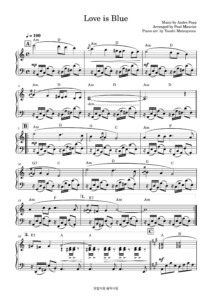 |
|
| André Previn – Play Like André Previn no. 1 |
 |
Andre Previn sheet music |
| Andre Previn – The Genius of (Piano Solos sheet music) |
 |
The genius of André Previn |
| Andre Rieu La Vie Est Belle (Songbook Collection As Performed By André Rieu) |
 |
Andre Rieu La Vie Est Belle (Songbook Collection As Performed By André Rieu) |
| Andrea Bocceli – Time To Say Goodbye | ||
| Andrea Boccelli – Time To Say Goodbye |
 |
|
| Andrea Bocelli Romanza songbook (Guitar & Voice) |
 |
Andrea Bocelli Romanza songbook |
| Andrea Bocelli – Anthology (songbook) |
 |
 |
| Andrea Bocelli – Con te partiro (Time to say Goodbye) Piano Solo arr | Andrea Bocelli – Con te partiro (Time to say Goodbye) Piano Solo | |
| Andrea Bocelli – Con te partiro (Time to say Goodbye) Piano Solo.mscz | ||
| Andrea Bocelli – The Best Of Songbook |
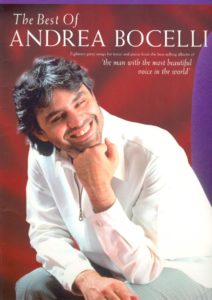 |
Andrea Bocelli best of |
| Andrea Bocelli Celine Dion The Prayer Easy Piano And Vocal By David Foster, Carole Bayer Sager, Alberto Testa And Tony Renis |
 |
|
| Andrea Bocelli Celine Dion – The Prayer – Easy Piano and Vocal by David Foster, Carole Bayer Sager, Alberto Testa and Tony Renis.mscz | ||
| Andrea Bocelli Cieli Di Toscana (Piano, guitar & Vocal) |
 |
Andrea Bocelli Cieli Di Toscana |
| Andrea Bocelli Sogno Songbook |
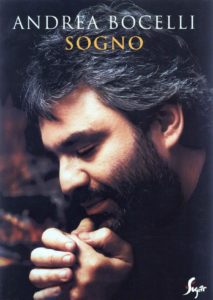 |
Andrea Bocelli sogno |
| Andrea Bocelli The Prayer |
 |
